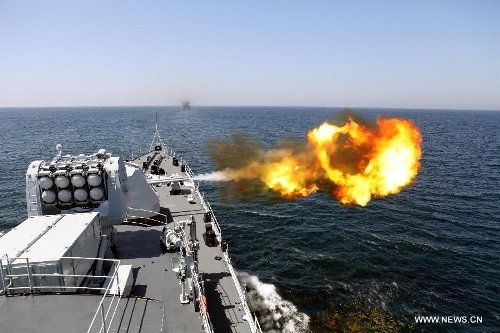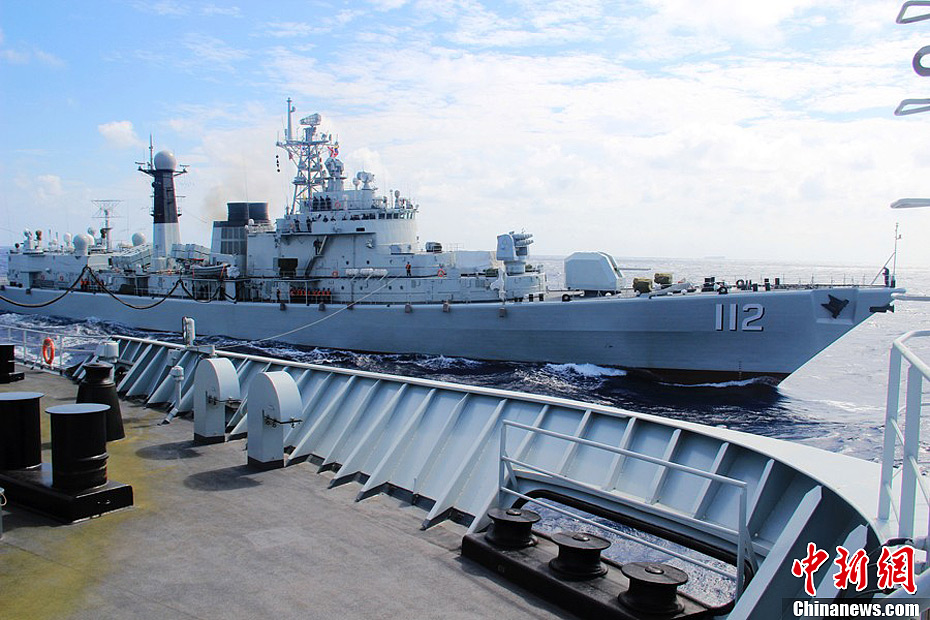“This AGI is most likely to be the Type 815 Dongdiao-class intelligence collection vessel Beijixing (pennant number 851), home ported in the East Sea Fleet,” Erickson, an associate professor at the Naval War College said.
The U.S., which
traditionally has maintained an impressive array of naval forces comprised of
units of the Sixth Fleet, had decided to reduce its naval presence in the
Eastern Mediterranean, but in view of the increased traffic -- from Russia,
China and especially the Islamic Republic of Iran -- has now changed its mind
and will retain a significant naval force in the area.
Regional security
arrangements have changed considerably since the onset of the Arab Spring, and
developments in the Middle East have enhanced Cairo’s role within the strategic
framework. Reliable sources say the Muslim Brotherhood-controlled government
has offered Washington “more than facilities” in order to ensure Washington’s
continued support during the Muslim Brothers’ crisis-ridden bid to secure
control over the state.
Officials at the US embassy in
Cairo confirmed the impression of a continuing close relationship between
Egypt’s Armed Forces, the US Defense Department and the administration in
Washington.
[March 1]The 14th naval squad, sent by the Chinese People's Liberation Army (PLA) Navy, departed February 16 from China to the Gulf of Aden and Somali waters for escort missions.
[February 25 2011]
China said it was sending a navy ship to protect its citizens being evacuated. The PLA Navy has just dispatched Xuzhou,F530, a Type 054 Jiangkai-II class missile frigate, from the ongoing seventh PLAN anti-piracy task force deployment off Somalia to steam to Libyan coast to provide support and protection for the ongoing evacuation mission there. The escort mission has been approved by the Central Military Commission, according to Xinhua, and at least 6,300 of the roughly 30,000 PRC citizens in Libya have been evacuated. Xuzhou incorporates many stealth features: sloped hull design; radar absorbent materials; and reduction of surface equipment and features.
Builders: Hudong-Zhonghua Shipyard
Huangpu Shipyard
Operators: People's Liberation Army Navy
Preceded by: Type 054 frigate
Succeeded by: Type 054B frigate
Cost: ¥ 1.58 billion
Completed: 10
Xuzhou
General characteristics
Type: Frigate
Displacement: 4,053 tonnes (full), 3,600 tonnes (standard)
Length: 134 m (440 ft)(CCTV report)
Beam: 16 m (52 ft) (CCTV report)
Propulsion: CODAD, 4 x SEMT Pielstick 16 PA6 STC diesels, 5700 kW (7600+ hp @ 1084 rpm) each
Speed: 30 kn estimated
Range: 3,800 miles estimated
Sensors and processing systems:
Type 382 Radar (Upgraded from Type 381 Radar "Sea Eagle S/C") 3D air/surface search radar
Type 344 (Mineral-ME Band Stand) OTH target acquisition and SSM fire control radar
4 x Type 345 (MR-90 Front Dome) SAM fire control radars
MR-36A surface search radar, I-band
Type 347G 76 mm gun fire control radar
2 x Racal RM-1290 navigation radars, I-band
MGK-335 medium frequency active/passive sonar system
ZKJ-4B/6 (developed from Thomson-CSF TAVITAC) combat data system
HN-900 Data link (Chinese equivalent of Link 11A/B, to be upgraded)
SNTI-240 SATCOM
Electronic warfare
and decoys: Type 922-1 radar warning receiver
HZ-100 ECM & ELINT system
Armament: 1 x HQ-16 32-cell VLS SAM launcher
2 x 4 C-803 anti-ship / land attack cruise missiles
1 x 76 mm dual purpose gun
2 x Type 730 7-barrel 30 mm CIWS guns
Triple 324 mm YU-7 ASW torpedoes
2 x Type 726-4 18-tube decoy rocket launchers
Aircraft carried: 1 Kamov Ka-28 'Helix' or Harbin Z-9C
Aviation facilities:







No comments:
Post a Comment